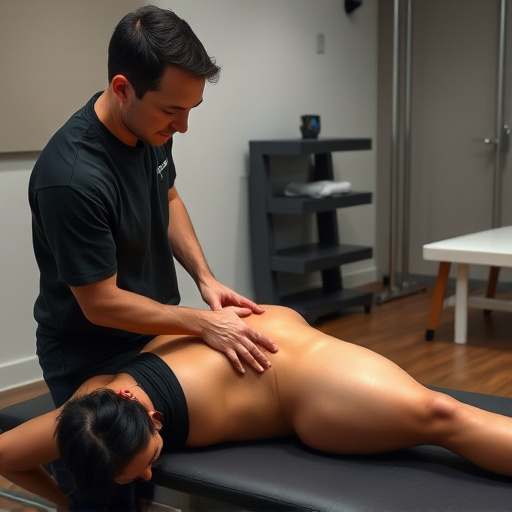Breathing techniques offer a powerful and often overlooked tool for managing chronic pain. By linking mind and body, conscious breathing activates relaxation responses, reducing pain perception. Healthcare professionals incorporate personalized breathing exercises into treatment plans to promote muscle recovery, well-being, immediate relief, and long-term self-management of chronic pain conditions. Regular practice reduces stress, physical tension, and inflammation, improving circulation and endorphin release for enhanced overall well-being.
Chronic pain can be a debilitating condition, but breathing techniques offer a powerful tool for improvement. Understanding the connection between breath and pain is key to managing symptoms effectively. This article explores how specific breathing practices can calm both mind and body, providing long-term benefits for those struggling with chronic pain. We’ll delve into the science behind it and provide practical techniques to empower individuals in their journey towards better pain management.
- Understanding the Link Between Breath and Pain
- Techniques to Calm and Relax the Mind and Body
- Long-term Benefits of Regular Breathing Practice for Chronic Pain Management
Understanding the Link Between Breath and Pain

Our breath is an often overlooked yet powerful tool in managing chronic pain. The mind-body connection is a complex and intricate web where every thought, emotion, and physical sensation is interconnected. When we experience or feel pain, our breathing patterns naturally change; this biofeedback loop can be both helpful and harmful. Unconscious holding patterns and shallow breaths can intensify pain signals, while conscious, deep breathing techniques have been shown to activate the body’s relaxation response, reducing the perception of pain.
Understanding this link is crucial in developing effective chronic pain management strategies. By incorporating personalized treatment plans that include breathing exercises tailored to individual needs, healthcare professionals offer a holistic approach to muscle recovery and overall well-being. This strategy not only provides immediate relief but also empowers individuals with a skill they can use anywhere, anytime, promoting long-term self-management of their condition.
Techniques to Calm and Relax the Mind and Body

Breathing techniques are a powerful tool for calming and relaxing both the mind and body, which is particularly beneficial for those dealing with chronic pain management. By focusing on the breath, individuals can shift their attention away from discomfort and reduce mental tension. Deep, controlled breathing activates the parasympathetic nervous system, triggering a relaxation response that helps to lower heart rate, blood pressure, and muscle tension. This in turn can provide much-needed headache relief for those suffering from chronic headaches or migraines.
In the context of sports injury treatment and injury rehabilitation, mindful breathing practices have been shown to enhance overall recovery. The rhythmic and intentional act of inhaling and exhaling can help to reduce inflammation, improve circulation, and promote tissue healing. Moreover, these techniques foster a sense of mental clarity and emotional balance, enabling individuals to cope more effectively with pain and the challenges of recovery, whether from a sports injury or other conditions leading to chronic pain.
Long-term Benefits of Regular Breathing Practice for Chronic Pain Management

Regular breathing practice offers significant long-term benefits for individuals managing chronic pain. By training the mind and body to focus on slow, deep breaths, techniques like diaphragmatic breathing or progressive muscle relaxation can reduce overall stress levels, including physical tension associated with pain. This is particularly beneficial for those experiencing conditions such as fibromyalgia, arthritis, or nerve damage, where anxiety and muscle stiffness can exacerbate symptoms.
Incorporating these practices into daily routines supports not only chronic pain management but also enhances overall well-being. Studies have shown that mindful breathing techniques reduce inflammation in the body, improve circulation, and stimulate the release of endorphins—natural painkillers produced by the brain. Moreover, for individuals seeking alternative treatments for conditions like whiplash from personal injury or looking into innovative options like shockwave therapy, a strong foundation in breathing exercises can complement these approaches, potentially leading to more effective chronic pain management.
Breathing techniques offer a simple yet powerful tool for individuals managing chronic pain. By understanding the mind-body connection and utilizing specific breathing exercises, people can effectively calm their nervous system, reduce inflammation, and enhance overall well-being. Regular practice of these techniques can lead to significant improvements in chronic pain management, providing a natural and accessible approach to complement traditional treatments. Incorporating breathing practices into daily routines has the potential to transform lives, offering a path towards greater comfort and improved quality of life.














